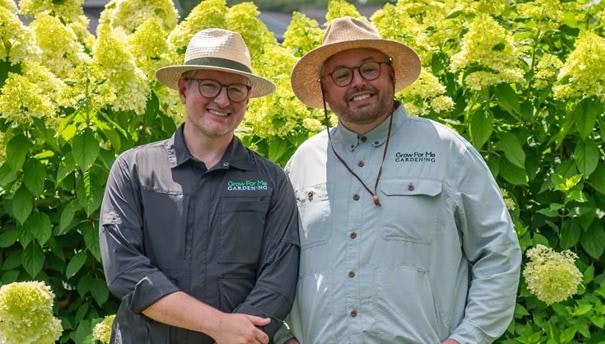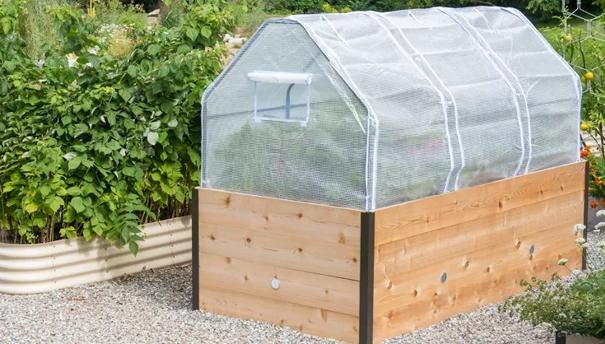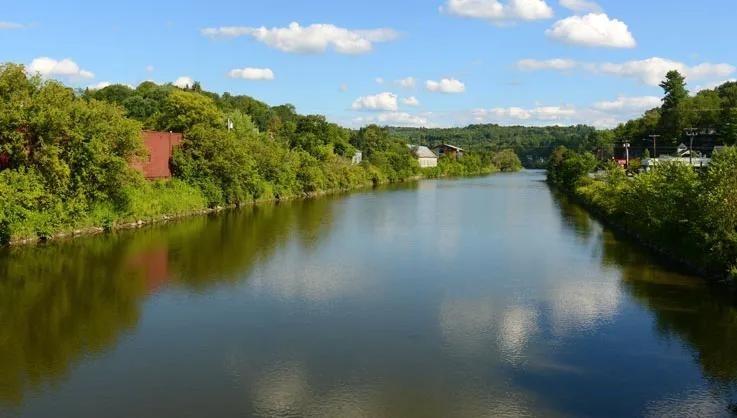
When I'm out in the garden, there's no music I'd rather hear than the songs of orioles, cardinals, goldfinches, chickadees and robins. During the winter months, when I'm spending most of my time indoors, watching birds at my feeders becomes one of my very favorite things to do. And I'm not alone. According to the National Bird Feeding Society, more than 70 million people in the U.S. and Canada put out over a billion pounds of bird feed each year.
Attracting birds to my yard and garden gives me a way to connect with nature—even when it's 10 degrees below zero. By providing food and shelter, I'm also playing an important role in helping birds survive at a time when many bird populations are in decline.
Lots of the plants around my house and gardens were planted to provide food for the birds: assorted berries for the grosbeaks and cedar waxwings; thistle for the goldfinches; sunflowers for the chickadees; nectar for the hummingbirds, and of course plenty of compost pile pickings for the blue jays.
Over the years, I've discovered that birds like to hang out where they can find two things: good habitat and an assortment of feeders.
Create Habitat
The single most important way to attract birds is to provide bird-friendly surroundings. Sure, birds want to eat the seed or suet from your birdfeeders. But they also need to find shelter, water and natural foods. In fact, studies show that even a bird that regularly visits your winter feeders will only get about a quarter of its food there.
 Seeded perennials, such as these coneflowers, can be left up for winter. Birds will come to eat the seeds.
Seeded perennials, such as these coneflowers, can be left up for winter. Birds will come to eat the seeds.An appealing habitat for birds will have a wide variety of plants. Yards dominated by lawn will never attract as many birds as a yard filled with an assortment of perennials, shrubs and trees. Even better, you can include plants that are known to be favored by birds. For example, you can plant nectar-rich bee balm for hummingbirds, or berry-producing viburnums for cedar waxwings. (There's a list of recommended plants in the box at the end of this article.) If possible, include trees and shrubs of different sizes and shapes. Some birds prefer tall trees for perching, so they can scan the surroundings, while others like the cover of a dense shrub.
Remember that birds also need access to water year-round for drinking and for preening their feathers to ensure good insulation. A water garden, pond or a birdbath can be both an attractive garden accent and an important habitat feature.
Provide Food with Birdfeeders
If possible, it's a good idea to offer an assortment of different styles of feeders. Some birds, such as chickadees, will eat from almost any feeder, including the palm of your hand. But others seem to have distinct preferences for a certain type of perch, feeding port or roof. Some will only eat from an open feeder close to the ground. So it's not surprising that the more types of feeders you provide, the more kinds of birds you will attract.
Put Feeders in the Right Spot
Even with a great feeder and top-quality seed, you still need to think about placement. Many birds are afraid to visit a feeder that's too exposed. Others prefer to swoop in from across the yard, making a clear shot right to the perch. Try placing one of your feeders near a tree or large shrub that offers some natural cover. This will give birds a place to hide if frightened, and a way to escape predators (such as hawks). I planted a cluster of gray dogwoods (Cornus racemosa) about 25 feet from my dining room window to create bird-friendly cover. I locate one feeder about 2 feet from those shrubby dogwoods and another one about 10 feet away. The dogwoods provide timid birds with a sense of safety during the winter. They also provide berries in the summer and a nesting site in the spring.
If you put more than one feeder in your yard, try separating them by at least 3 to 4 feet. Some types of birds will aggressively protect "their" feeder from other birds. By spacing your feeders out, you will give more birds an opportunity to feed at the same time.
On a mid-winter morning, it makes me incredibly happy to watch the assortment of woodpeckers, nuthatches, cardinals and juncos outside my window. I can't tell you exactly why that is. But I know that for me, being a gardener is about more than just growing plants. What really turns me on is participating in and celebrating the amazing diversity and abundance of the natural world. There's a lot of enjoyment to be had for the price of a feeder and a 50 lb. bag of birdseed.
Landscaping for Birds
- Conifers provide cover, winter shelter and summer nesting sites. Some also provide sap, buds and seeds.
- Grasses and legumes provide cover for ground-nesting birds if the area is not mowed during the nesting season. Some also provide seeds.
- Nectar-producing plants attract hummingbirds and orioles. Hummingbirds especially like tubular red flowers, such as fuchsia, bee balm, coral bells and penstemon.
- Summer-fruiting plants include cherry, honeysuckle, raspberry, serviceberry, grape and plum. Birds attracted include brown thrashers, robins, thrushes, waxwings, woodpeckers, orioles, cardinals, towhees and grosbeaks.
- Fall-fruiting plants include dogwoods, mountain ash, winterberries and cotoneasters. They are used by both migratory birds preparing to leave and non-migratory species preparing for winter.
- Many winter-fruiting plants are not palatable until they have frozen and thawed numerous times. These include glossy black chokecherry, Siberian crabapple, snowberry, bittersweet, sumac and Virginia creeper.
- Nut and acorn plants provide food and nesting habitat. They include oaks, hickories, buckeyes, chestnuts, butternuts and walnuts. Broken nuts and acorns.




